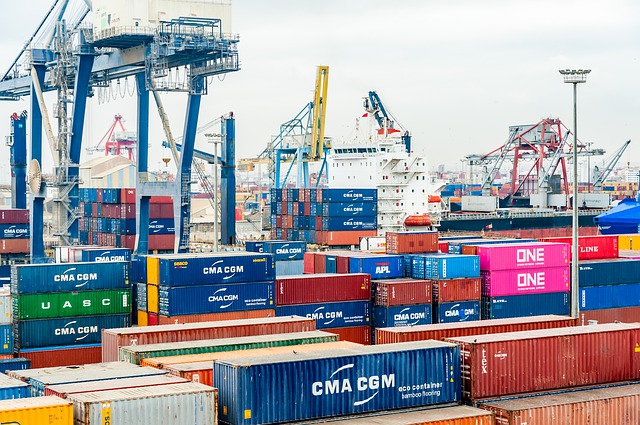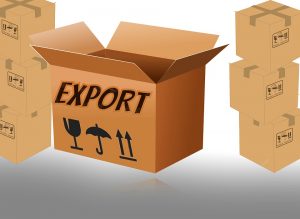Saudi Arabia has one of the largest export economies in the world. It has the 29th most complex economy out of all countries in the world. This means that the export economy is a big deal in Saudi Arabia. But the import economy is not far behind. Saudi Arabia exported $170B and imported $96.2B in 2017. This resulted in a positive trade balance of $74.2B. Many things are exported and imported to Saudi Arabia and that is exactly what we are here to talk about – export and import to Saudi Arabia. We gathered all the information we think you need to know before you decide to export or import to Saudi Arabia.
The top exports of Saudi Arabia
Because the export economy is so large in Saudi Arabia, we decided to talk about that first. What could they possibly be exporting for such large amounts of money? Many things. They export Crude Petroleum in very large amounts. Crude Petroleum or oil is a very expensive good. It is the base for lots of products such as gasoline, diesel, and jet fuel. You can only imagine how expensive it is. In fact, Saudi Arabia earned a whopping $110B in 2017 just from Crude oil exportation. Crude Petroleum represents 64.7% of the total exports of Saudi Arabia. In 2018., this number grew to $231.6B in export.
Refined petroleum brought around $14.1B and Ethylene Polymers $11B. Refined Petroleum is the 4th most traded product and Ethylene Polymers are the 32nd most traded product. The top exporter of Ethylene Polymers is Saudi Arabia. And these goods are something you can’t cut the shipping costs for. Saudi Arabia spends a lot of money to export these goods to many parts of the world. They mostly export to China, Japan, India, South Korea, and the United States.
The top imports of Saudi Arabia
As already mentioned, Saudi Arabia is the 34th largest importer in the world as maritime transport can be simple. The countries Saudi Arabia imports goods from are China, the United States, Germany, South Korea, and France. Cars represent 7.64% of the total imports of Saudi Arabia. 3.32% are planes, helicopters, and spacecraft. Around $10,37B have been spent on these items yearly in the last five years.
They also spend a lot of money on importing food such as fruits and vegetables and animal products. This is because Saudi Arabia doesn’t have the proper climate to grow certain types of foods. They mostly import barley, rice, wheat, and corn.

Saudi Arabia imports some types of food because its climate is not suitable for growing certain types of food.
Types of import and export businesses in Saudi Arabia
Because import and export are a big part of Saudi Arabia’s economy, there are plenty of import and export businesses. The export management company, or the EMC, is the first type. EMC handles all the details for the company to ship goods overseas with ease. Let’s say you want to export plastic from Saudi Arabia. That’s where an EMC can help you. They will tell you about everything you need to know from how much it is going to cost, to how long the process is going to last and is it worth it. They can also help you hire a reliable freight forwarder.
You also have export trading companies or ETC. The purpose of ETC is to find out what foreign buyers want and then locate domestic companies that can export the goods. These types of export businesses play a big role when it comes to the export economy of Saudi Arabia as they do a very good job. You also have the import/export merchants. They buy merchandise from a manufacturer, foreign or domestic. Then what they do is resell that merchandise around the world for larger amounts of money. As you can see for yourself, dealing with export and import to Saudi Arabia can bring you a lot of money.
What you need to know if you want to export and import to Saudi Arabia
Gathering documents for visiting Saudi Arabia is much easier than gathering documents if you want to export and import to Saudi Arabia. If you want to start importing some goods to Saudi Arabia you will have to do plenty of things even though they have a transparent and predictable import licensing system. The same goes for exporting goods there. And to export goods from the United States to Saudi Arabia you will need:
- Original certificate of origin – This document has to be legalized by the chamber of commerce of the exporting country.
- Original commercial invoice – This document must state the country of origin, name of the carrier, brand, and quantity of goods. As well as a description of the goods including weight and value.
- Irremovable label showing the country of origin.
- A clean bill of lading or airway bill.
- Documents with health regulations if needed (depending on what you are exporting).
- Insurance documents.
- Certificate of conformity with applicable Saudi Arabian standards.
- Arabic translation of all these documents.
Saudi exporters need a license to export goods. And when you want to export from Saudi Arabia, you need to submit a certificate of origin of Saudi products. And some goods need special approval to export. Such as antiques, Arabian horses, subsidized items, etc.
Things you can export and import to Saudi Arabia
There are certain things that are either strictly restricted or require special permission to be exported or imported. Pork, weapons, alcohol can’t be imported in any way. And items such as medicines, pesticides, military uniforms, and wireless technology require special approval. This is that one thing you must know if you are planning to start doing exporting and importing as well as all the things we mentioned above.




